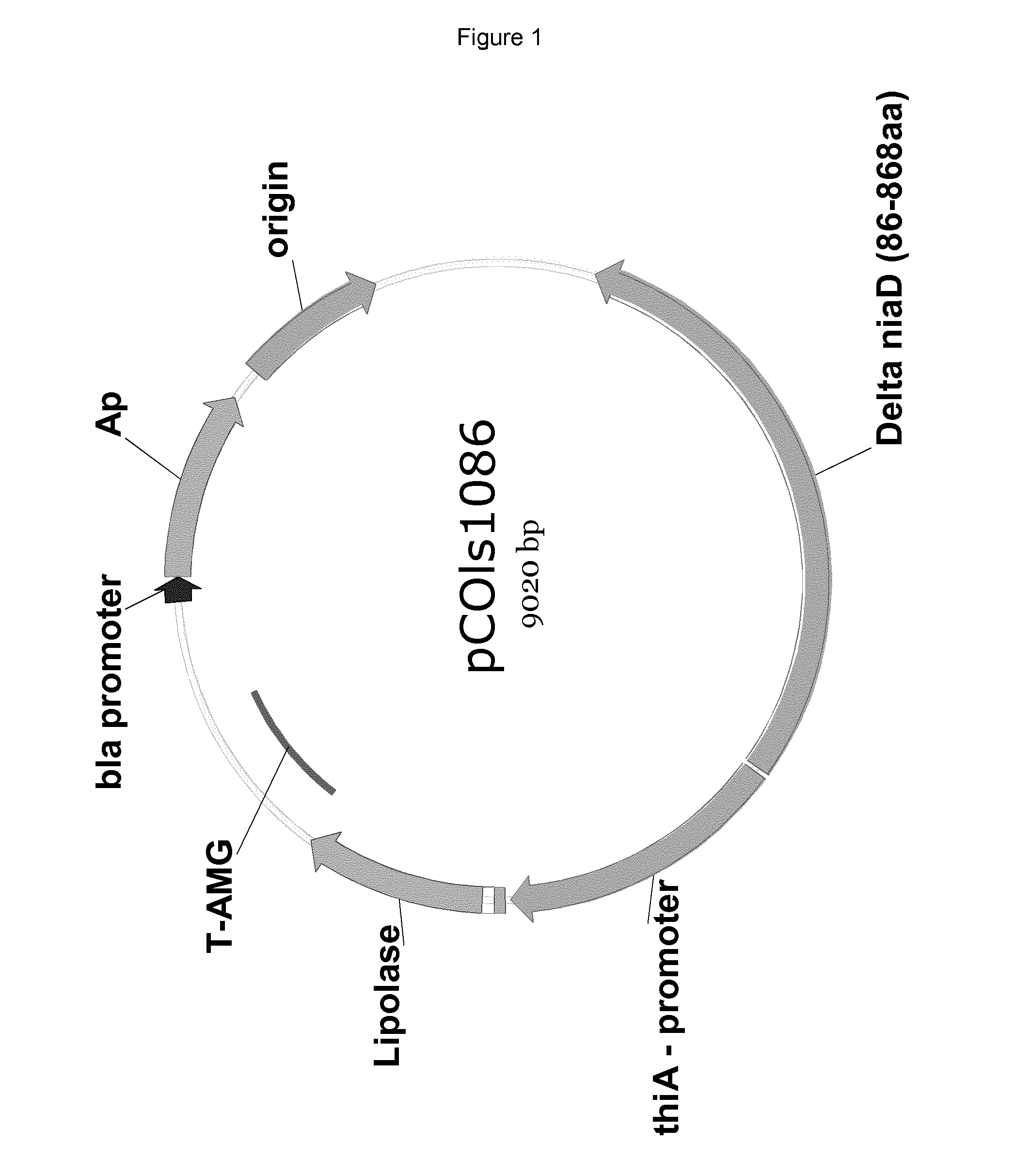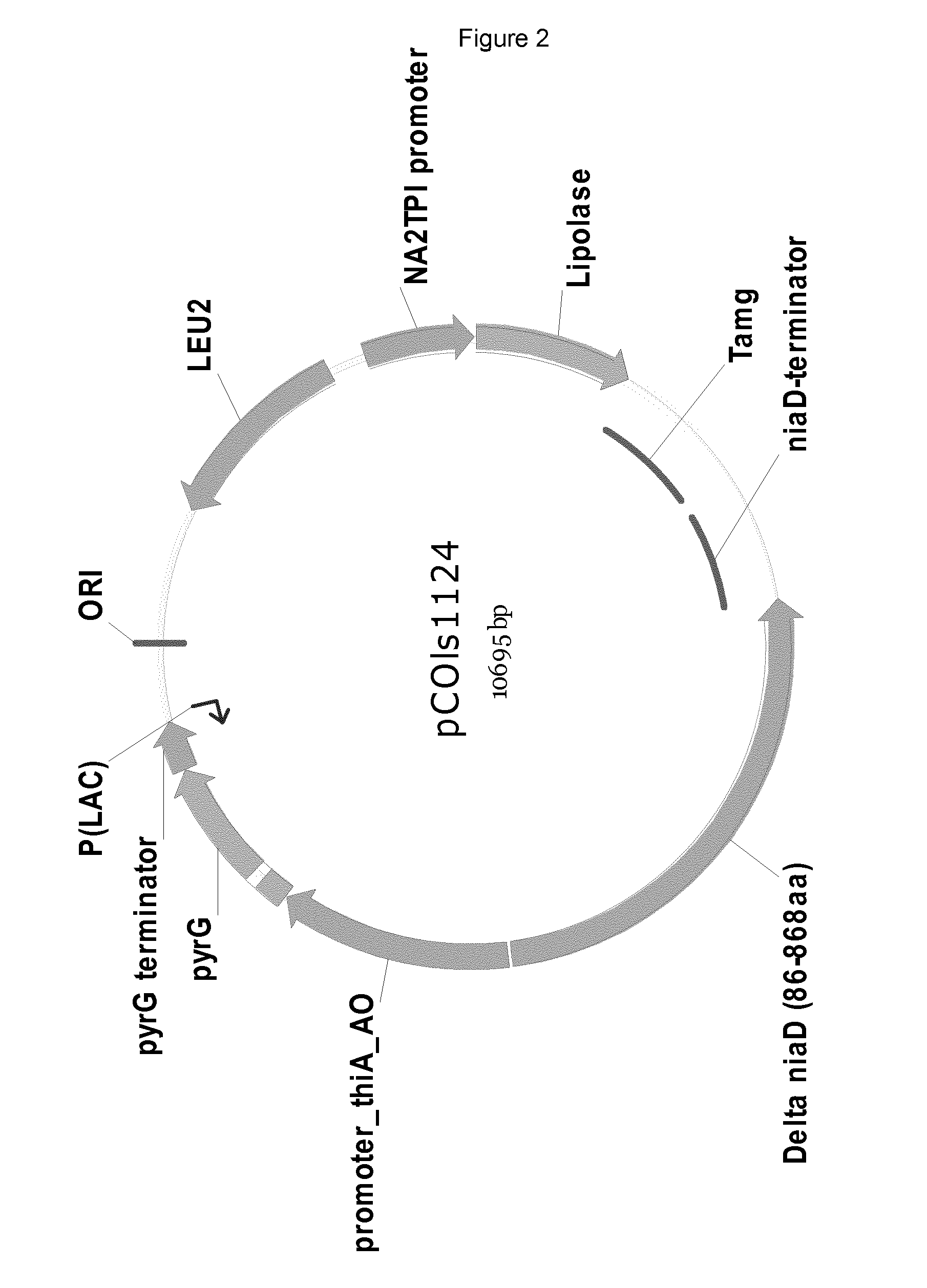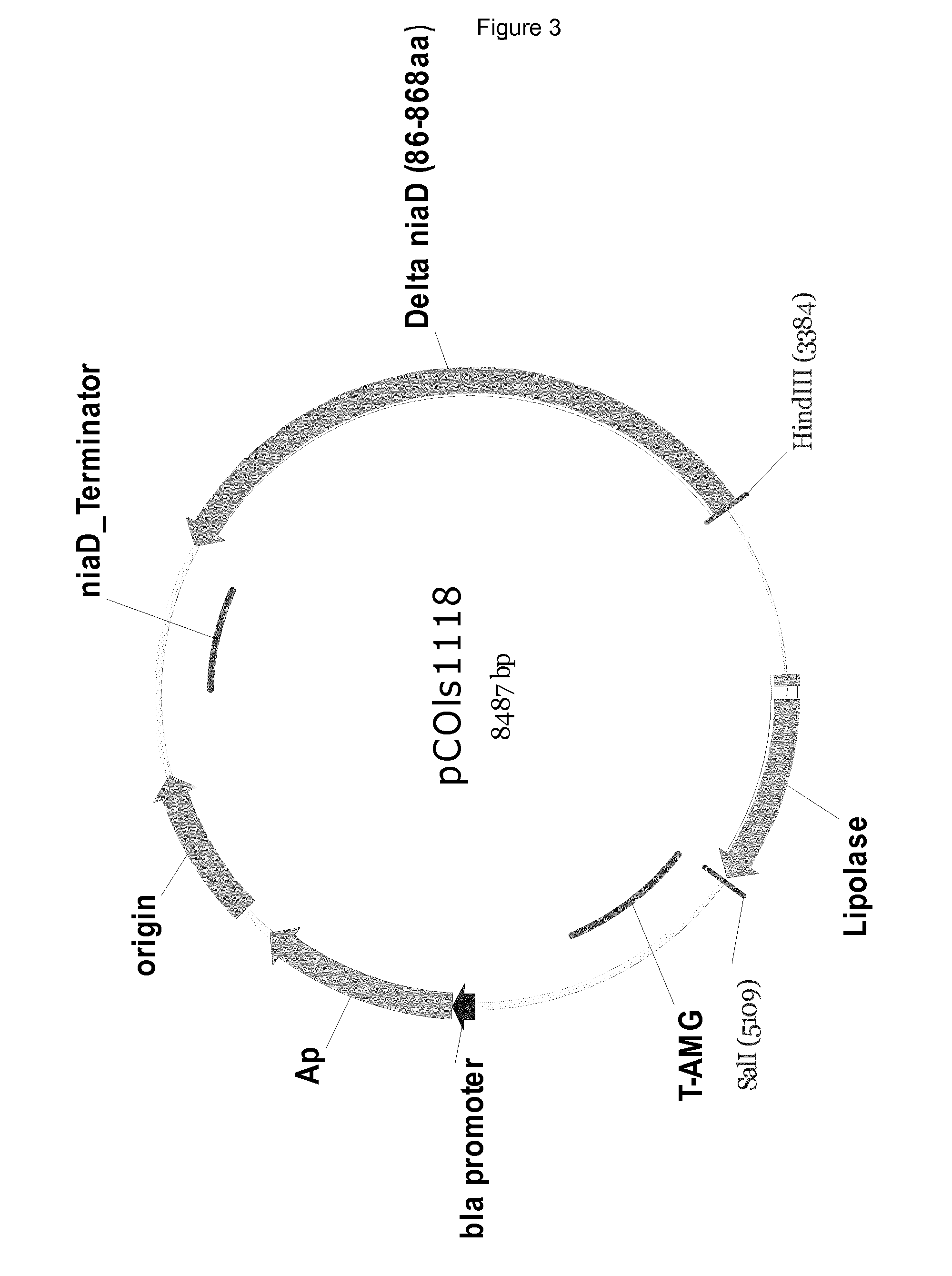Selection in fungi
a technology of host cells and fungi, which is applied in the field of selection of fungi, can solve the problems that no similar systems have been described for fungal host cells, and achieve the effect of higher product yield
- Summary
- Abstract
- Description
- Claims
- Application Information
AI Technical Summary
Benefits of technology
Problems solved by technology
Method used
Image
Examples
example 1
[0132]The thiA promoter from Aspergillus oryzae and its 5′ untranslated region (UTR) riboswitch were amplified using the primers:
[0133]
P722 (SEQ ID NO: 1):atctcgagctcgcgaaagcttttcggtaaatacactatcacacac;andP723 (SEQ ID NO: 2):gagctcctcatggtggatccactagtgcatgccaagttgcaatgactatcatctg.
[0134]The resulting 1338 bp fragment was In-Fusion cloned, using the Clontech In-Fusion kit, to the 7718 bp HindIII / BamHI fragment from the vector pCOIs207 (SEQ ID NO:21). The resulting vector was named pCOIs1086 and is shown in FIG. 1.
[0135]Plasmid pJaL1262 (full sequence shown in SEQ ID NO:22) was cut with SphI / AfeI, and the resulting 4840 bp fragment was purified.
[0136]Plasmid pCOIs1086 was cut with NheI, blunt-ended with Klenow and cut again with SphI and KasI. The resulting 4677 bp fragment was purified and ligated to the 4840 bp fragment from pJaL1262 and the resulting vector was named pCOIs1123.
[0137]The pyrG gene from Aspergillus oryzae was amplified from chromosomal DNA from ...
example 2
Use of Intron Variants to Regulate Marker Expression
[0149]All the riboswitch intron variants were fused to the lipase reporter gene of pCOIs1126. The resulting constructs were integrated at the niaD locus in one copy in an Aspergillus oryzae strain having a partially deleted niaD gene which was repaired by the individual in-coming constructs, thereby enabling growth on nitrate as the sole nitrogen source.
[0150]Transformants were grown in Sucrose Medium for three days and lipase activity was measured on the supernatant as detailed above. The lipase activities found are summarized in table 2 below:
[0151]
TABLE 2Intron variantRelative reporter activity% of wild typeIntron(6)0.244100Intron(5)0.23195Intron(4)0.17873Intron(3)0.06627Intron(2)0.0187Intron(1)0.0104Intron(0)0.0062.5Intron(−1)0.0000
[0152]From these results, we conclude that it is possible to make a series of intron-containing 5-UTRs with different intron splicing efficiencies providing a range of expression levels of the downst...
example 3
Intron Riboswitch Variants are Repressible by Thiamine
[0153]Four of the thiA riboswitch intron variant strains: (6), (3), (0) and (−1), were grown in sucrose medium for 48 hours without or with a supplement of thiamine (10 uM of ThiamineHCl), respectively. Samples were analysed for lipase activity as already shown—the results are in table 3 below.
[0154]We were unable to determine (“UD”) any activity from Intron(0) and Intron(−1), but the wildtype sequence in Intron(6) was actually repressed by almost a factor of 100 with addition of thiamine, as expected, and Intron(3) was repressed by almost a factor of 10 on top of the reduction due to the shortened branch and acceptor site distance in that variant.
[0155]
TABLE 3Intron variant−ThiamineHCl+ThiamineHClIntron(6)1001.6Intron(3)8.31.4Intron(0)UDUDIntron(−1)UDUD
PUM
| Property | Measurement | Unit |
|---|---|---|
| size | aaaaa | aaaaa |
| antibiotic resistance | aaaaa | aaaaa |
| Structures | aaaaa | aaaaa |
Abstract
Description
Claims
Application Information
 Login to View More
Login to View More - R&D
- Intellectual Property
- Life Sciences
- Materials
- Tech Scout
- Unparalleled Data Quality
- Higher Quality Content
- 60% Fewer Hallucinations
Browse by: Latest US Patents, China's latest patents, Technical Efficacy Thesaurus, Application Domain, Technology Topic, Popular Technical Reports.
© 2025 PatSnap. All rights reserved.Legal|Privacy policy|Modern Slavery Act Transparency Statement|Sitemap|About US| Contact US: help@patsnap.com



